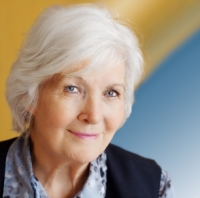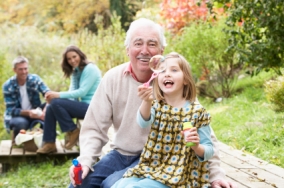
By Kac Young PhD, ND, DCH
 What do you want in the coming year? What changes do you want to see? Are you approaching the season of resolutions with joy or dread? It’s kind of a mixed bag, isn’t it? “Gee, I want to be thinner, happier, wealthier….but I don’t know quite what to do. Where do I start?” Does that sound like familiar head chatter? We can take the stress out of making and keeping resolutions by figuring out what you truly want and go about making those changes one step at a time – this time in a different way. If you can look back, this time next year, and see changes for the better, then it will all have been worth it, right? As they say in Australia, “Let’s give it a go, mate!”
What do you want in the coming year? What changes do you want to see? Are you approaching the season of resolutions with joy or dread? It’s kind of a mixed bag, isn’t it? “Gee, I want to be thinner, happier, wealthier….but I don’t know quite what to do. Where do I start?” Does that sound like familiar head chatter? We can take the stress out of making and keeping resolutions by figuring out what you truly want and go about making those changes one step at a time – this time in a different way. If you can look back, this time next year, and see changes for the better, then it will all have been worth it, right? As they say in Australia, “Let’s give it a go, mate!”
Five Tips on Making Resolutions That Lead to Positive Change.
1) The very first thing you need to do is figure out what you want, from an emotional point of view. It’s not that you “want to lose weight,” it’s how you will feel when you are thin. It’s not that you “want more money,” it’s that you want to feel prosperous and be able to enjoy the good things in life or do more good in the world. It’s not that you “want to get organized,” it’s that you will feel (and probably be) more productive when you clear the clutter and organize your stuff. Tip #1 then, is to name what you want to change in your life and then dig deeper to identify the motivating emotion behind the desired change or resolution. The human brain is more likely to support what you want to achieve when it knows how you want to feel when the change occurs.
2) Be willing to train yourself like you would a new puppy. (Yep, you read it right!) The whole secret to change is retraining the brain to make different choices in the same circumstances. If you want to quit smoking, you will need to train your brain to choose NOT smoking over smoking, recognize your triggers and then to do something else instead.
Using the stimulus-response technique, like a puppy, your subconscious responds to positive reinforcement and substitution. If you set a goal to stop smoking, then you need to have a list of rewards you can give yourself when you make a choice not to light that cigarette. Or, in the case of weight loss, have a list close by that gives you alternative suggestions for the chocolate cake, the candy bar or the fried chicken. Reward your good behavior, be gentle and positive with yourself just like you would be to a new puppy that is just getting his bearings in the new home. Show yourself a little love and patience and you will reform your bad (former) behavior into good (improved) behavior and healthier choices. Tip # 2 is to be positive, patient, and reward your good behavior as you make day-to-day changes.
 3) Help yourself by organizing your desired change in the same way that you would search for a new car. List the positive and negatives, the pros and cons and the best advantages of the changes you want to achieve. Make a list of the rewards and advantages you will have when the change is successfully accomplished. Figure out what your triggers are and have a pre-written script so you can talk yourself out of the temptation with firm images of the new and improved you. You may want to list things like: better breathing, healthier lungs, clothes that don’t smell of smoke and the monetary savings from not buying cigarettes if you want to stop smoking. Or, that you look younger, you like how your clothes fit and feel and you have more energy for the activities you enjoy if you are wanting to lose weight. Make sure the changes are always written in positive statements that reflect how you will feel in the future when the change is accomplished. So, Tip # 3 is to become your own coach and give yourself affirmative pep talks using milestones and accomplishments as motivators.
3) Help yourself by organizing your desired change in the same way that you would search for a new car. List the positive and negatives, the pros and cons and the best advantages of the changes you want to achieve. Make a list of the rewards and advantages you will have when the change is successfully accomplished. Figure out what your triggers are and have a pre-written script so you can talk yourself out of the temptation with firm images of the new and improved you. You may want to list things like: better breathing, healthier lungs, clothes that don’t smell of smoke and the monetary savings from not buying cigarettes if you want to stop smoking. Or, that you look younger, you like how your clothes fit and feel and you have more energy for the activities you enjoy if you are wanting to lose weight. Make sure the changes are always written in positive statements that reflect how you will feel in the future when the change is accomplished. So, Tip # 3 is to become your own coach and give yourself affirmative pep talks using milestones and accomplishments as motivators.
Stay tuned for part 2 of this article shortly…..
– Kac Young , a former television director and producer, earned her PhD. in Natural Health and is a Doctor of both Clinical Hypnotherapy and Naturopathy. While earning her Doctorates in Natural Health and Naturopathy, she completed 36 courses in nutrition from Baylor University.
